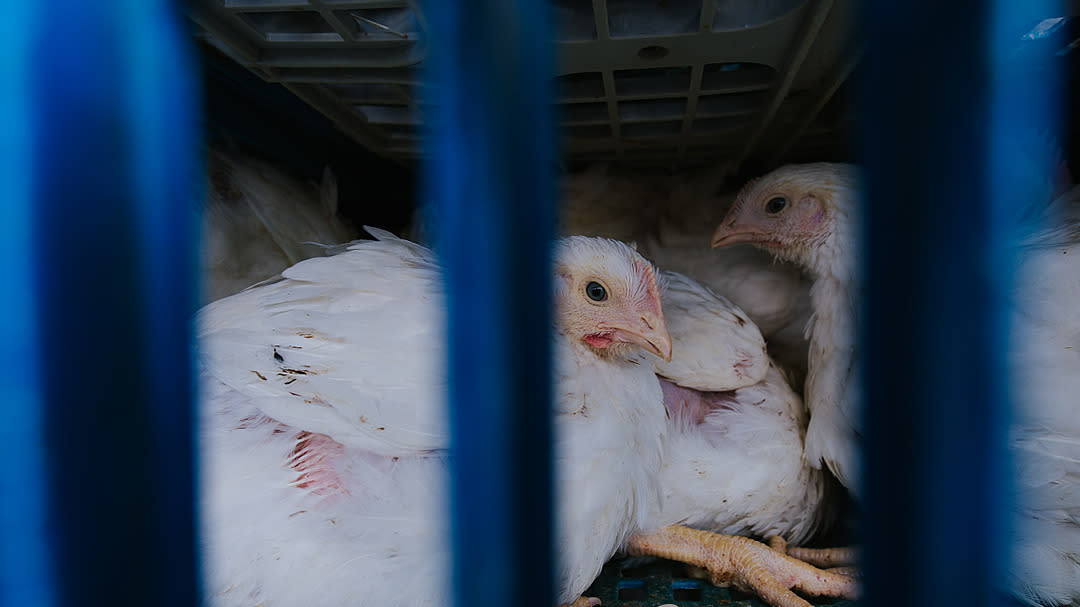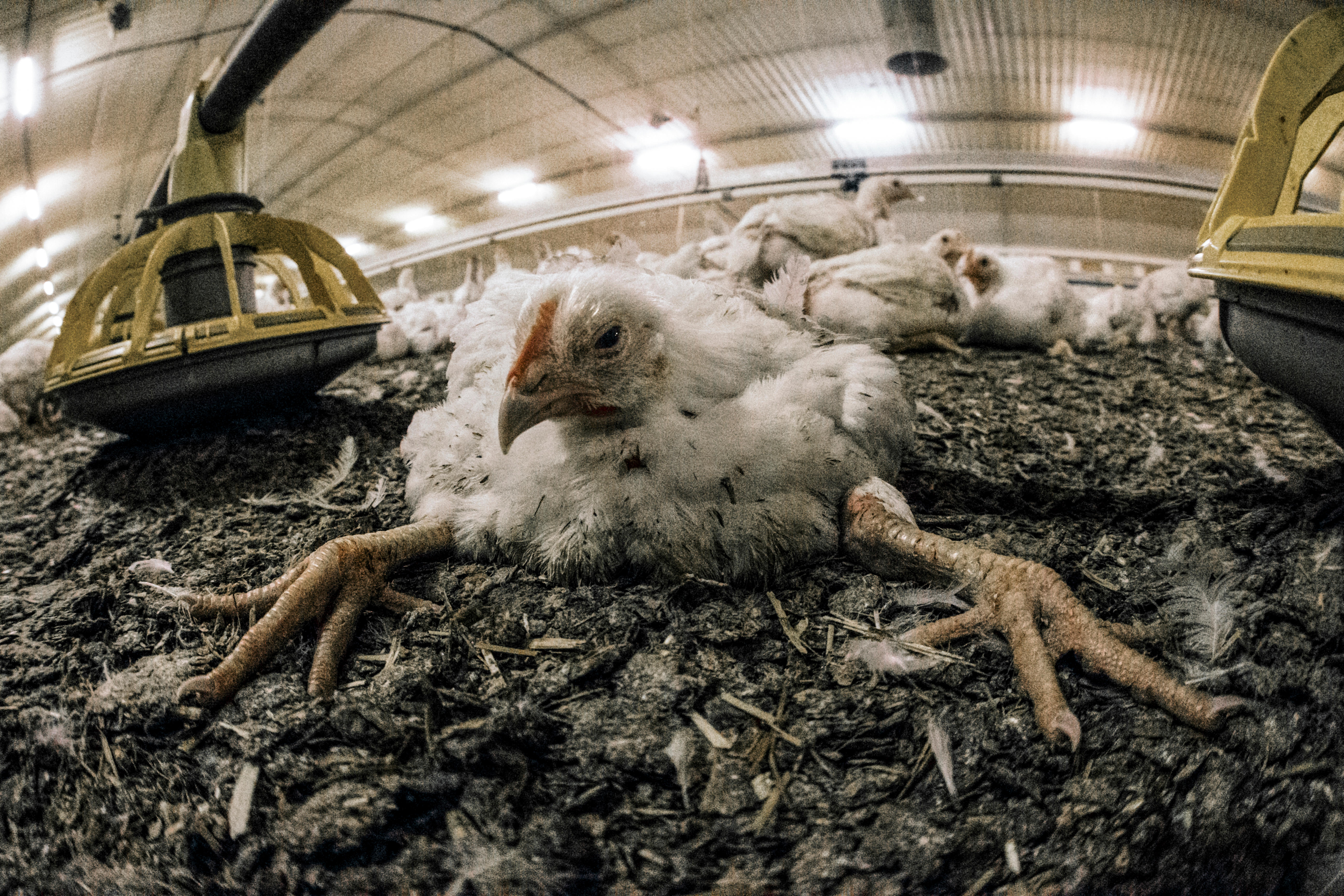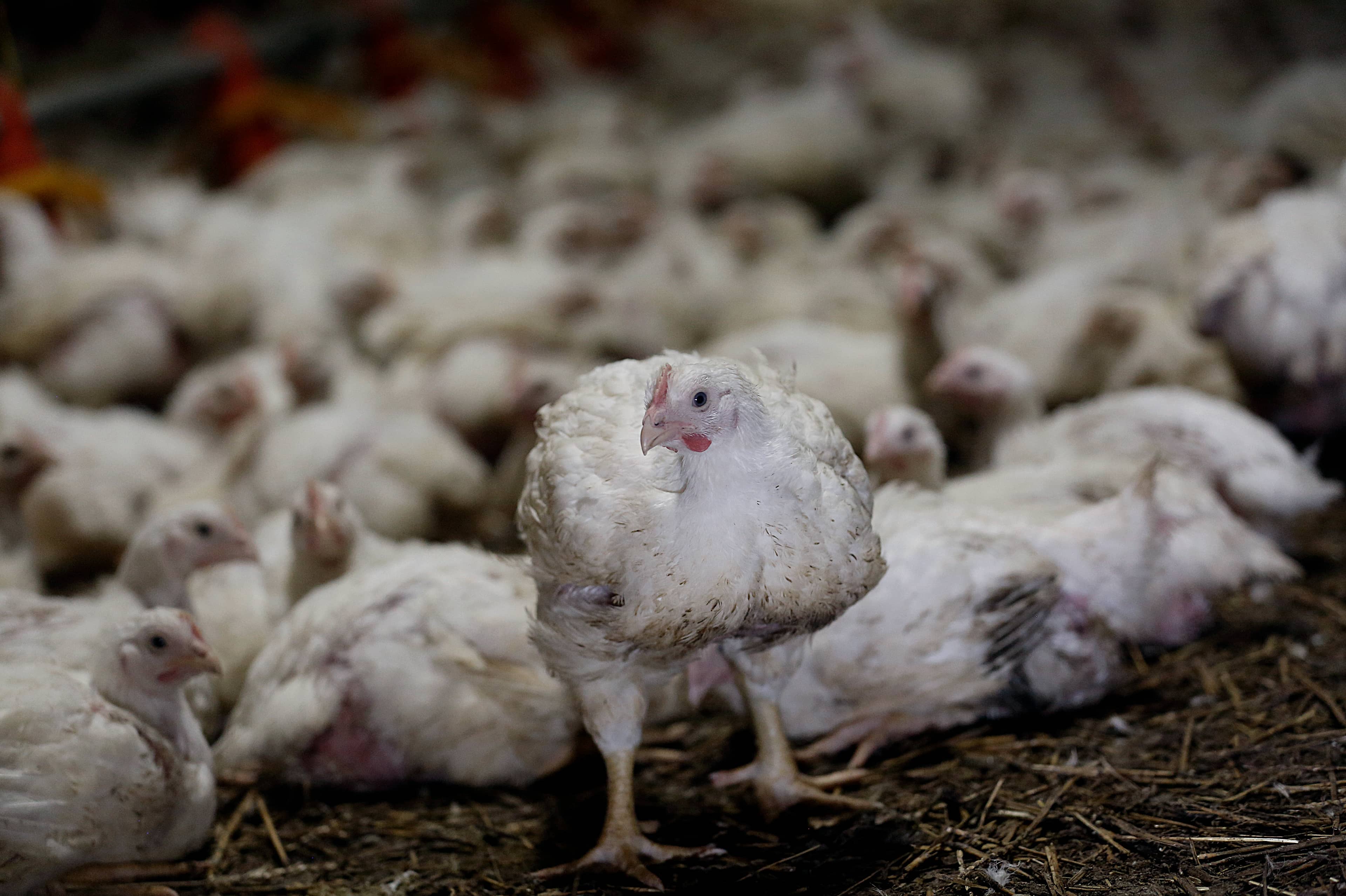




And the lack of protections on farms leaves workers exposed.

As I’m writing this, the CDC has confirmed five cases of avian influenza (H5N1) in humans since 2022. By the time you’re reading this, the official count may have already increased.
Regardless, public health experts say that the “real” number of infected people is almost certainly higher than what officials can confirm. This contagious bird flu has been ripping through wild animal populations at an unprecedented rate since 2020. Now it’s made its way onto farms. Though confirmed cases among humans remain few, this doesn’t mean that we can stop paying attention. Quite the opposite.
This virus is highlighting some of industrialized agriculture’s inherent problems. Namely, we’re seeing how the routine animal cruelty occurring on factory farms goes hand-in-hand with poor and unsafe conditions for the workers on those farms. For years, this has left the door open for the exploitation of migrant workers. Now, it could be fanning the flames for another pandemic.
How avian flu has spread from birds, to cows, to humans
This latest outbreak of avian flu was first detected in wild bird species originally in Europe, and in the US and Canada by 2021. Experts reported seeing “dramatic disease impacts” in raptors, sea birds, and colonial nesting birds. Unsurprisingly, the disease soon made its way onto poultry farms, a setting bound to accelerate the spread. In May 2024, the USDA recorded almost a million and a half infected birds on farms.
Last year, I wrote about how conditions on huge, industrial farms—sometimes known as concentrated animal feeding operations (CAFOs)—create a perfect storm for contagious diseases to spread. A large number of animals living in cramped, stressful, and squalid conditions is an ideal environment for viruses to jump easily from one host to another, infect various species, and adapt to become harder to treat with medicine. Epidemiologist Edwin Michael, PhD, recently noted the significant role of intensive animal agriculture in widespread infection. As he told Fortune: “We have to shed a light on how farming is done. That’s the trade-off, you want cheap meat and all the rest of it, but then you farm animals in this way and you’re opening the door up for other things.”
That phenomenon has been illustrated quite clearly as avian flu recently leapt from poultry to dairy cows. Health officials first detected H5N1 in cows on farms in Texas, Kansas, and New Mexico, and have since confirmed infections in at least 138 dairy herds in 12 states.
The CDC maintains that the risk to the general public is still “low.” Yet, with more than ten million cows on farms throughout the country, some scientists are concerned that cows could become a “permanent reservoir” for bird flu to mutate and spread to human populations. As evolutionary biologist Michael Worobey explains in the journal Nature, “Eventually the wrong combination of gene segments and mutations inevitably comes along.”
And even while the general public may be at a low risk, there is a group of some 100,000 people—in the US alone—living at a pronounced risk of coming into contact with this disease: farm workers.
We don’t know for sure how many workers have been infected
As of July 2024, five people in the US have tested positive for H5N1 infection in the US. Four of those cases are the result of exposure to cows, and one due to exposure to poultry. Without robust monitoring and testing of farm workers, though, it’s hard to say just how many humans have truly been infected with the virus.
The “parlors" where dairy cows are milked are already full of occupational hazards. They become acutely high-risk areas once infected cows enter the equation. Workers spend their day hooking cows’ udders up to machines that pump milk. The work is grueling, extremely fast-paced, and often less than sanitary. When a heifer is done getting milked and detached from the machinery, her fluids get left behind, leaked onto workers’ hands, and sprayed in workers’ faces. When workers rinse machinery using a high-pressure hose, the infected milk gets misty, and potentially infected droplets can circulate around the parlor like a vapor.
Thanks to a convoluted web of government agencies and departments, each with its own limited authority over the agricultural sector, there’s no clear-cut approach to mitigating the spread of diseases in such a hazardous environment.
As The New York Times reported in May, the bureaucratic hodgepodge involved—including the CDC, FDA, USDA, OSHA, EPA, and Citizenship and Immigration Services—“can be an impediment during a disease outbreak.”
These commercial dairy farms, where these cows are spreading the virus among themselves, are also quite impenetrable to meaningful government oversight. Animal welfare and food safety activists alike are all too familiar with this, but it’s a public health concern as well—especially now. The USDA, in fact, lacks the authority to institute mandatory testing of the workers on factory farms. The department could require mandatory testing of animals on farms, but has not done so yet.
The USDA “doesn’t ever want to be in a position where it has to declare that food supply from the U.S. is unsafe, because some of those food products may be exported to other countries and that can have a huge economic impact,” Dr. Jay Varma—former CDC employee and deputy commissioner of NYC’s health department—told the Times.
Given anecdotal reports of illnesses among farm workers around the country, veterinarian and epidemiologist Steve Valeika recently told The Atlantic he expects “there have been dozens of cases at this point.”
A historically unprotected group
Unfortunately, the dearth of protections in place for farm workers in the face of this frightening outbreak is not surprising. As dairy farms in this country have decreased in number but exploded in size since the 1980s, factory farms have struggled to find US residents willing to work in the harsh conditions a dairy CAFO entails. By and large, they’ve relied on Latinx immigrants to fill out their workforce.
According to a Texas A&M report, immigrant laborers make up more than half of the industry’s entire workforce, and nearly 80% of the country’s milk supply comes from farms that employ such workers. If not for the immigrant workforce, dairy production would decrease by 48.4 billion pounds and the cost of milk would increase by more than 90%.
Despite buoying a major component of the US economy, dairy farm workers are largely excluded from some of even the most basic labor protections. As Farmworker Justice notes in its 2024 report, federal legislation meant to protect agricultural workers—such as the Fair Labor Standards Act, Migrant and Seasonal Agricultural Worker Protection Act, and the Occupational Safety and Health Act—“all have notable exceptions for dairy workers, making those workers particularly vulnerable.”
As undocumented immigrants without access to the legal protections afforded to workers from the US, many dairy workers have no recourse when subjected to long hours (with no overtime pay), hazardous conditions, and safety violations. Farmworker Justice notes that a “fear of losing their jobs or being deported makes these workers willing to perform difficult, dangerous work.”
And it is dangerous work. According to the Bureau of Labor Statistics (BLS), the dairy industry had nearly twice the rate of workplace injuries compared to all of private industry combined in 2020, and about a 1.5 times higher rate of injury in 2022 compared to private industry. As with the avian flu issue, some researchers have concerns that underreporting of farm-related injuries could be skewing this data.
When deaths occur on farms, the fatalities often go uninvestigated, or even unreported. ProPublica reported on the lack of farm death investigations last year. It found that since 2009, at least 17—mostly immigrant—workers died on Wisconsin dairy farms. Eight of those deaths went uninvestigated by OSHA, which cited an exemption for farms with fewer than 11 employees.
In 2022, researchers with Civil Eats compared OSHA and BLS data on animal agriculture worker fatalities between 2011 and 2020, and concluded that 85 percent of farm worker deaths throughout that decade were unreported to OSHA.
That’s quite of bit of facts and figures, but it essentially boils down to this: If the H5N1 virus was looking to spread easily while avoiding detection, it couldn’t have picked a better place than on dairy farms—where both animals and humans have been silently suffering for years.
It’s time for a change
What we’re seeing in this avian influenza outbreak is simply the latest in the animal agriculture industry’s long history of plowing ahead toward profit, unfettered from ensuring the welfare of its animals, the safety of its workers, or the health of its consumers. In the wake of COVID-19, we need to learn our lesson and mitigate the risks of a future pandemic—not turn a blind eye to the warning signs.
Even beyond the risks to public health, humans deserve to make a living free of unchecked exploitation, safety hazards, and exposure to diseases, just as animals deserve to live a life free of cruelty and abuse.
If you want to see a world with a food system that’s humane to humans and animals alike, you are not alone. Learn about how you can get involved with The Humane League, and join a team of activists fighting for change.





